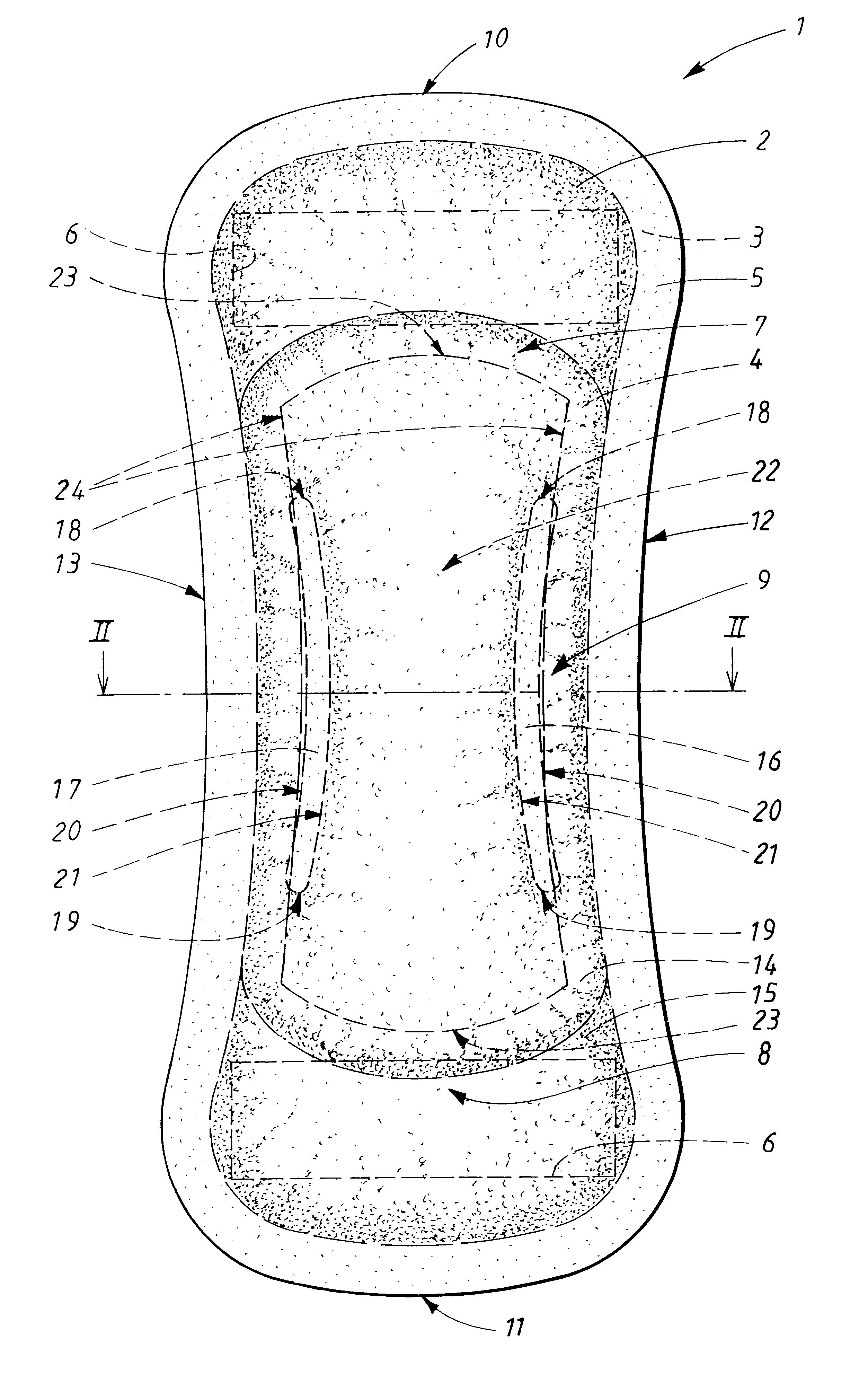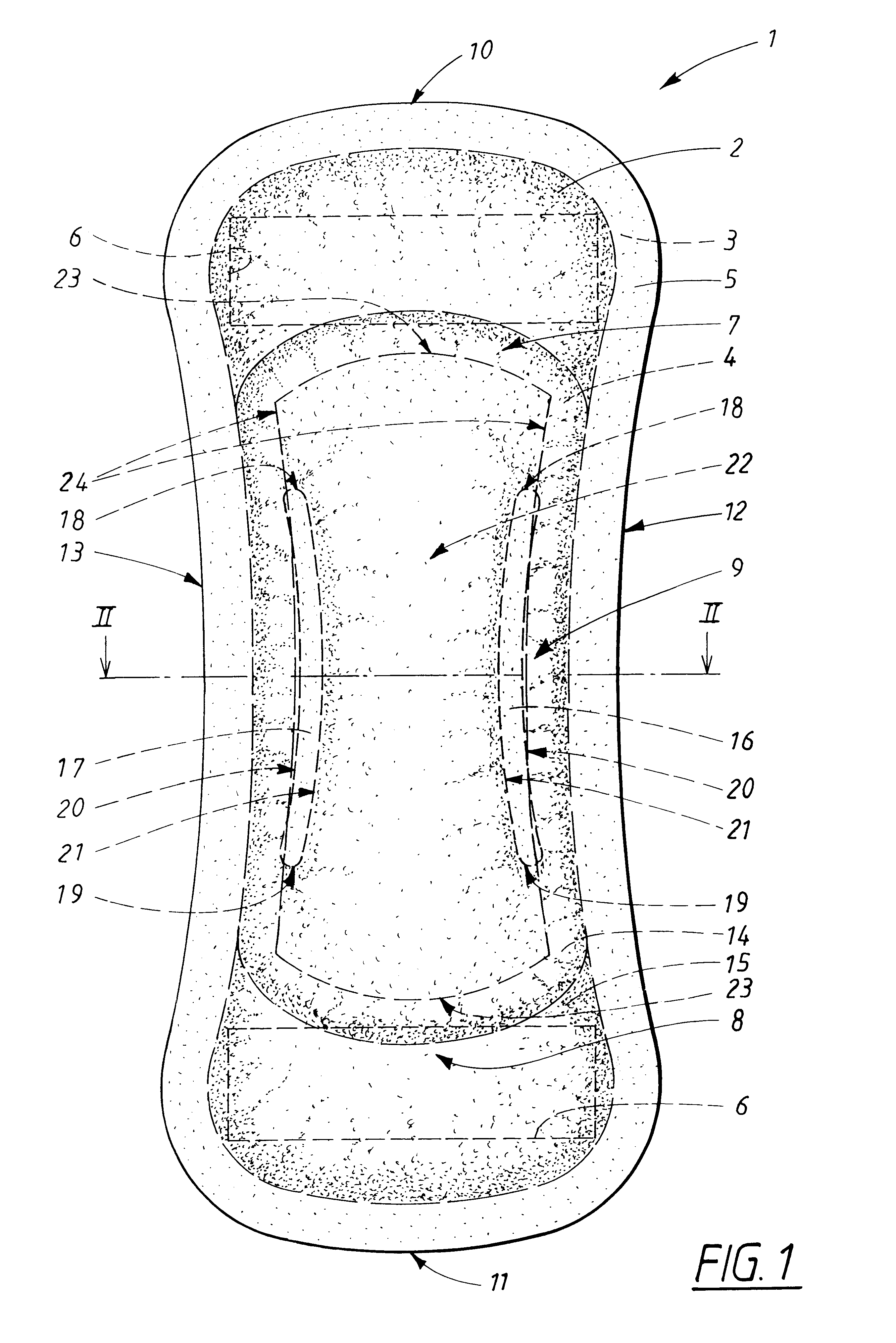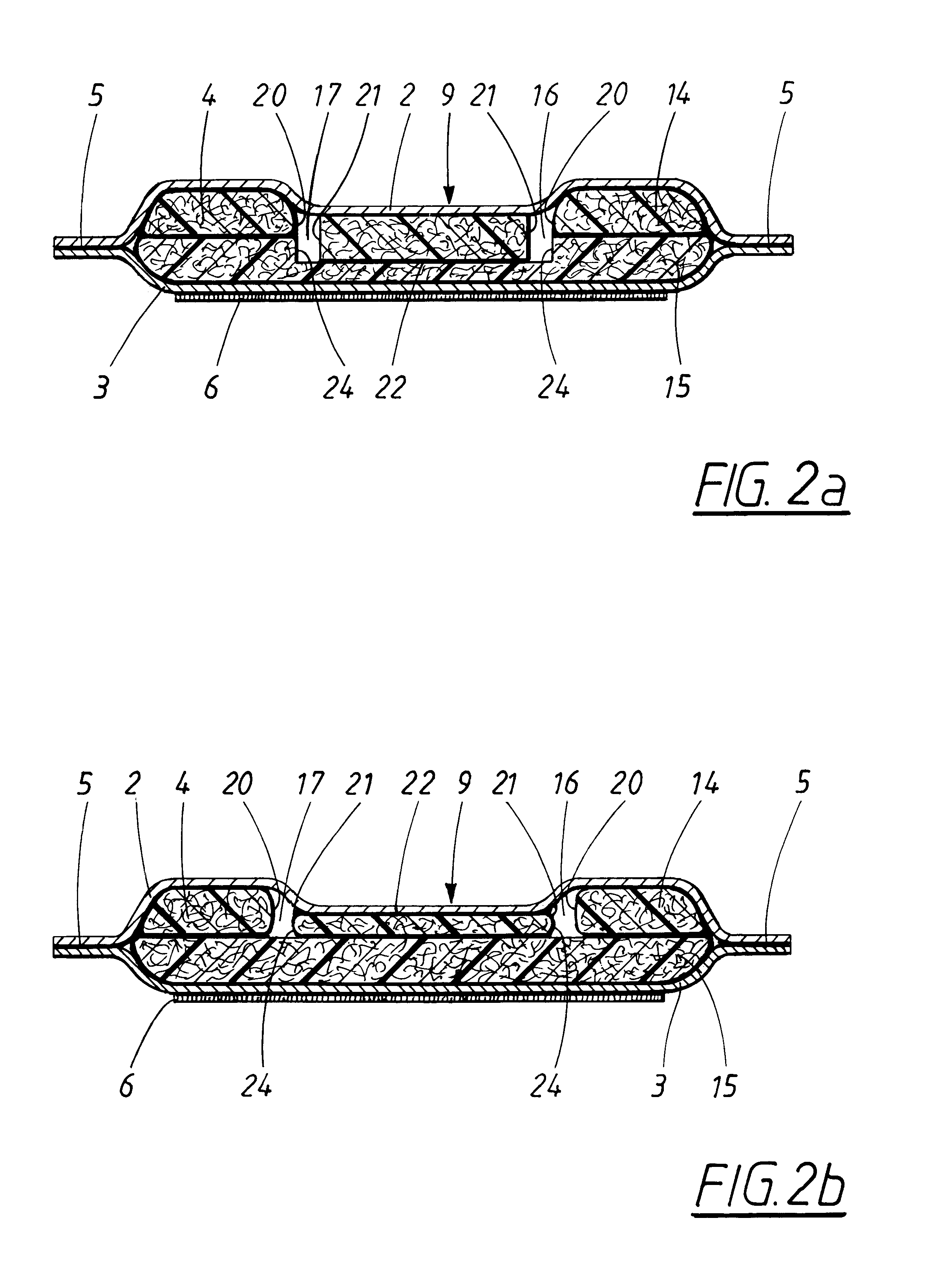Absorbent product with improved instantaneous liquid adsorption, and improved fit
a technology of instantaneous liquid adsorption and absorbent body, which is applied in the field of absorbent products, can solve the problems of users being disturbed and disoriented, and the admission rate is more rapid, and achieve the effect of prolonging the whole length of the absorption body, and reducing the amount of liquid in the body
- Summary
- Abstract
- Description
- Claims
- Application Information
AI Technical Summary
Benefits of technology
Problems solved by technology
Method used
Image
Examples
Embodiment Construction
The product 1 shown in FIG. 1 comprises a first liquid-permeable outer layer 2 and a second liquid-impermeable backing layer 3, and also an absorption body 4 which is enclosed between the layers 2,3. The two layers 2,3 have a somewhat greater extent in the plane than does the absorption body 4 and project past the absorption body 4 around the whole of the periphery of this body. The layers 2,3 are connected to each other within the projecting part 5, for example by means of gluing or welding with heat or ultrasound. The product has a longitudinal centre line and a transverse centre line.
The liquid-permeable outer layer 2 consists, for example, of a layer of nonwoven fibre material or of perforated plastic film, net material or the like. The liquid-impermeable backing layer 3 can consist of a liquid-impermeable plastic film, a nonwoven layer which has been coated with a liquid-blocking material, or some other easily flexed material layer which is able to resist liquid penetration. In...
PUM
 Login to View More
Login to View More Abstract
Description
Claims
Application Information
 Login to View More
Login to View More - R&D
- Intellectual Property
- Life Sciences
- Materials
- Tech Scout
- Unparalleled Data Quality
- Higher Quality Content
- 60% Fewer Hallucinations
Browse by: Latest US Patents, China's latest patents, Technical Efficacy Thesaurus, Application Domain, Technology Topic, Popular Technical Reports.
© 2025 PatSnap. All rights reserved.Legal|Privacy policy|Modern Slavery Act Transparency Statement|Sitemap|About US| Contact US: help@patsnap.com



